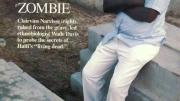Stress headaches, stress fractures, and stress-induced heart attacks already register with the general public. Now new research suggests that the lungs are vulnerable to the effects of stress as well.
“[Poor] lung function is very much a Cinderella disorder,” says Rosalind Wright, assistant professor of medicine at Harvard and a pulmonologist at the Beth Israel Deaconess Medical Center. The lungs have been neglected in part, she says, because there’s no clear-cut event like a heart attack to show evidence of their decline. But Wright and her colleagues, drawing on new data, say doctors need to pay more attention to pulmonary function and talk about it with at-risk patients. Recently, in the journal Thorax, they published one of the first studies to show that hostility is a risk factor for poor lung function among older men.
After controlling for factors like smoking, weight, and education level, the researchers found that men who were more hostile at the outset of the study suffered a more rapid rate of decline in their lung function than others. Moreover, the study found that damage to lung function from hostility was comparable to the amount of damage done by cigarettes, an effect even the investigators were surprised to see. That means, says Wright, that doctors can say to patients, “Just as breathing in tobacco smoke can hurt your lungs and lead to ill health, harboring hostility may be harmful.”
The Thorax paper doesn’t specify the ailments that may result from weakened lung function, though there is evidence that a rapid decline on the order of those recorded in the study’s most hostile subjects can lead to lung disease, heart disease, and even early death. The study’s strength, Wright says, is that it uses an interdisciplinary approach involving psychology and medicine, and relies on objective measures of both hostility and lung function.
The researchers analyzed data from a long-term study of 670 men aged 45 to 86 whose hostility and pulmonary function were measured several times during an eight-year period. Pulmonary function was assessed using a spirometer, which measures subjects’ lung capacity and rate of airflow when they blow into a tube. Hostility, defined as a personality trait that leads to chronic anger, was measured by a widely used true-false questionnaire that assesses mistrust, resentment, and suspiciousness. (Statements on the 50-question item survey included: “I would certainly enjoy beating a crook at his own game” and “I have often met people who were supposed to be experts who were no better than I.”)
The results, despite their objectivity, may not entirely please doctors, whose time with patients is already tight. “Clinicians look for: ‘You have it or you don’t,’” says Wright’s fellow author Laura Kubzansky, an assistant professor in the department of society, human development, and health at the Harvard School of Public Health. “Psychological factors are not so simple. You can’t say, ‘Oh, this is a non-hostile person’ in the way that you can say, ‘This is a nonsmoker.’ It makes the whole endeavor harder.”
But Wright says intervention can start simply, with a doctor raising the issue of emotions and health in a conversation. “As a physician, I can tell you we carry a lot of weight,” she says. “Many times people go away and then come back [to talk] after I’ve planted the seed.” If a patient asks for help with hostility issues, she explains, a doctor can then recommend something like cognitive behavioral therapy.
Both Wright and Kubzansky say that this research has made them more focused on how people become hostile in the first place. “It changes the way I parent,” says Wright, who is the mother of two children. “When they get riled up, I’ll sit down and have a conversation with each of them—one I wish I could have had myself when I was young—about how anger at his brother affects him, and about how it affects his brother.”
The researchers’ next steps are to look at whether the effects of hostility are reversible, and to conduct a similar study of a group of younger people, to get a sense of how early these effects can be seen. “We can intervene later,” says Kubzansky, “but wouldn’t it be nice if they never get there [in the first place]?”
~Katharine Dunn
Rosalind Wright e-mail address: rosalind.wright@channing.harvard.edu





